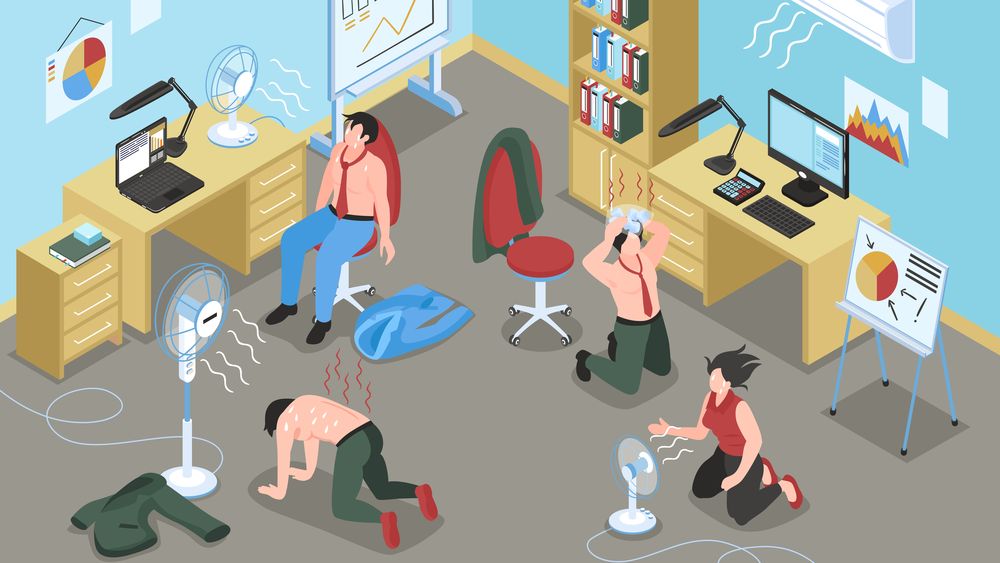GETTING hot under the collar? Not surprising, this summer — and maximum workplace temperatures are a hotly contested topic in Britain.
There are no clear guidelines for the UK, and only a handful of European countries have legislation. Germany, France, Spain and Italy have recommended limits — but these are not enshrined in law and are difficult to enforce. Employers in the UK have a duty under the Workplace Health and Safety Act (1992) to ensure safe and reasonable working conditions, but it’s the employer who decides what those conditions are. Employees are often left unsure of their rights.

London School of Hygiene & Tropical Medicine professor Antonio Gasparrini estimates that almost 1,000 people died in England and Wales from sweltering conditions between July 17 and 19. The UK Health and Safety Authority (UKHSA) says the number of heat-related deaths in Britain could rise to 7,000 a year by 2050 — without sufficient adaptation.
Director of health and assessment consultancy Rhino Safety Cate Walter supports calls for the introduction of a maximum workplace temperature. “The reason the unions are getting involved is because there is no maximum,” she told Sky News. In terms of protection for workers, it’s quite simply an obligation to maintain a ‘reasonable’ working environment.”
That’s obviously subjective, but she believes that in most cases employers want to do right by their employees. “A lot are doing what they can, such as letting people work from home, buying fans, adjusting working hours, and relaxing dress codes. All those things can help.”
Temperature checks should include air temperature, humidity, air movement and radiant temperature from heat sources: boiler rooms, kitchens, rooms with low circulation or rooms with machinery. Staff working outside risk sunstroke, dehydration, and fatigue. procedure so you’re prepared for next year.
Set limits on when and how long an employee is allowed to work in hot rooms. Provide water or isotonic drinks in the workplace. Consider workers’ overall health, age, size and gender to narrow the focus. Monitor how employees react to the changes via surveys or by simply asking people how they feel.
Allowing employees to start earlier in the day or work in the late afternoon or evening means they are more likely to avoid maximum temperatures.




























